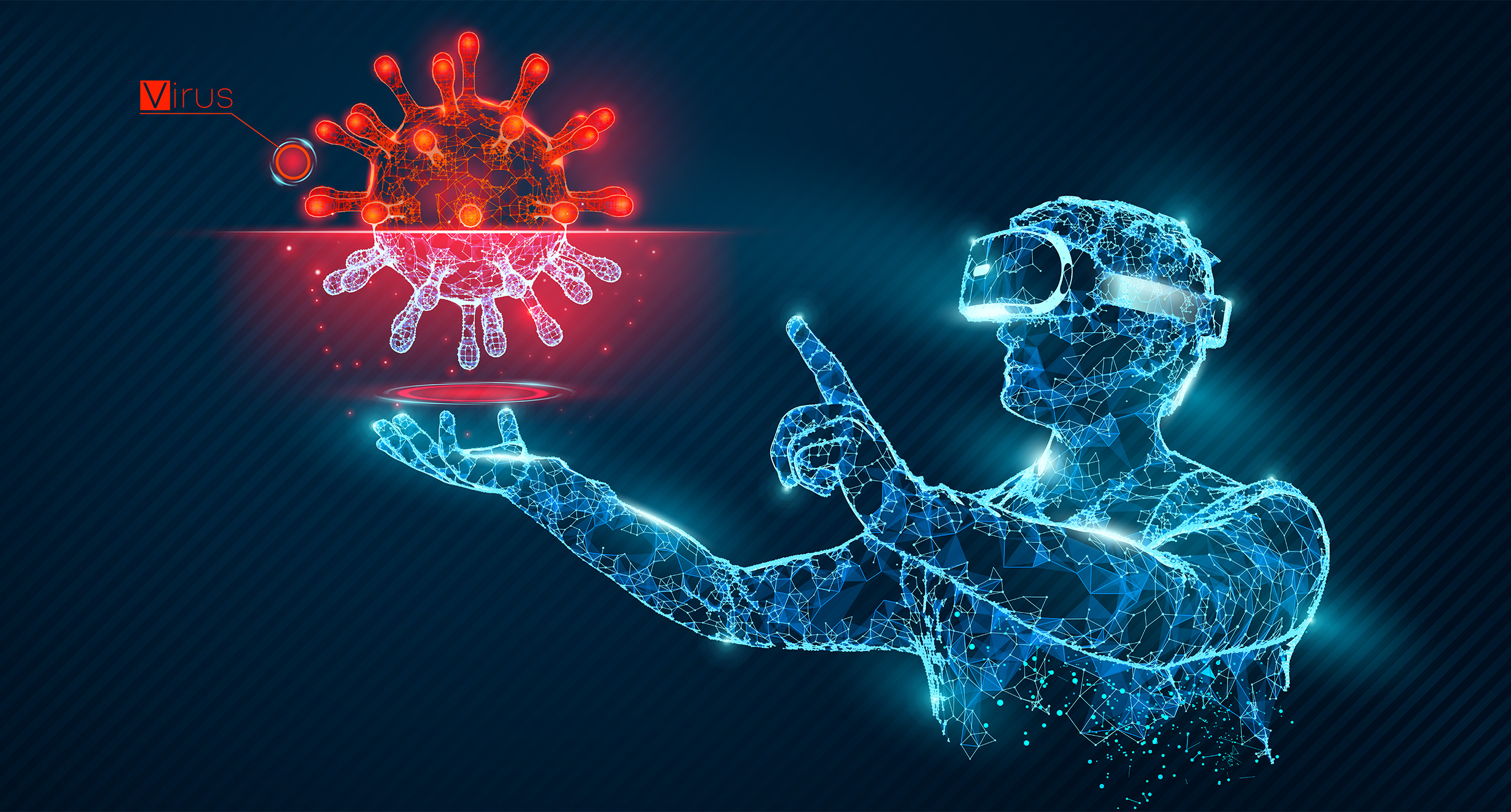
COVID-19 Follow Up with Podcast Guests
Our final episode of the series was the only interview conducted in the midst of quarantine and one of the questions Matt asked Amir Ebrahimnia and Simón Rojas of Derooted was how their work had shifted in the midst of the pandemic. That question stuck with me because this pandemic has the potential to change so many cultural and social aspects of the world for both the better and worse. Knowing now what we didn’t know during the initial seven interviews sets this whole venture in new relief. How have some of our guests navigated the waters of this COVID-19 pandemic and how do they view their work in light of this brave new world we have been thrust into?
I sent out an email to our guests asking two questions in order to continue the discussion that Matt and I began with them at the beginning of this year. These are the responses from the guests that had the time to respond. We hope this gives you a view into how significant events shape technology, the people who develop it, and the societies that use it.
Brandon Oldenburg
88 Names: In the wake of COVID-19, how has your work/company/life been affected by the onset of this pandemic and worldwide calls to quarantine?
Brandon: The team of 27 at Flight School have had a relatively simple transition. We have been working remotely without any hitches for over 40 days now. Transitioning our sister company, Reel FX, on the other hand, was not as simple as they are juggling the completion of two feature films and ramping up on others. That requires a robust and secure VPN connection and highly encrypted security. They got it up and working incredibly fast without a hitch as well.
88 Names: How do you foresee this pandemic shifting immersive technology development and affecting public use in the long term? How will it shift your individual goals/perspectives for your own work?
Brandon: Back in 2001 when we at Reel FX were a 20 plus person outfit we decided to install wood floors. So we all had to figure out a way to work from home for a few weeks. 9/11 happened on the first day of working from home. We all had to get very good at communication despite not having great video chat then. We did use a system called Camtasia that allowed us to talk on a party line, share our screens and draw and give notes on top. It was sorta an early version of Google Docs and Slides and Slack. In the end it drew us closer as a team. I think it’s healthy every now and then to change things up that require stronger communication disciplines.
I can also see us adapting to allow folks to work from home more often.
Joanna Popper
88 Names: In the wake of COVID-19, how has your work/company/life been affected by the onset of this pandemic and worldwide calls to quarantine?
Joanna: HP has a number of projects and initiatives focused on using our technology to help people and businesses get through these trying times. Here are a few examples:
• The 3D Print model lab team jumped into action immediately and started building needed parts for healthcare workers and hospitals such as masks, respirators, ventilators, and door openers. The parts are printed on HP 3D print technology and available for anyone in the 3D Print network to print. For info on the HP 3D Printed Parts for Hospitals and Healthcare Workers you can visit https://enable.hp.com/us-en-3dprint-COVID-19-containment-applications.
• With so many workers working remotely without access to their high-performance computers at work, HP Z Central allows remote access into your work space with 90 Day free trial available at https://www8.hp.com/us/en/workstations/zcentral.html.
• Educators and students everywhere have pivoted to online learning models rapidly. However, many students don’t have access to remote learning-ready laptops. HP is offering HP Refresh Software to make older computers remote-education ready for students at www.hp.com/hprefresh.
• Virtual Reality technology is now even more relevant than ever to your business or school, with remote work, training, and collaboration. Virtual Reality technology plus Virtual Reality software collaboration tools enable learning, connecting, and collaborating. Improved product design, faster product reviews, more impactful training, education with higher retention, and the experience of being together with your team can be achieved through Virtual Reality, from anywhere at any time. For more information on HP Virtual Reality Technology visit www.HP.com/go/VR. For more information on the Newly Announced HP + Valve + Microsoft Virtual Reality Headset visit www.HP.com/Reverb.
88 Names: How do you foresee this pandemic shifting immersive technology development and affecting public use in the long term? How will it shift your individual goals/perspectives for your own work?
Joanna: Virtual Reality adoption will be accelerated. VR empowers us to learn, collaborate and connect. The virtual collaboration platforms and Steam are seeing record concurrent users. In addition to all the enterprise and education use cases with very strong ROI for businesses I mentioned above, VR is also providing a portal to other worlds, an escape, a meditation, entertainment, and immersive connection to other people. I see the acceleration of adoption and technological breakthroughs.
Noah Nelson
88 Names: In the wake of COVID-19, how has your work/company/life been affected by the onset of this pandemic and worldwide calls to quarantine?
Noah: It’s weird, as my day-to-day—working largely from home, emails, writing, interviews, calls—has changed far less than others I know. But my field has been upended completely. We had to postpone our major annual event, and have no idea when we will be able to mount it. Scores of live shows have been mothballed. Venues shuttered. Mass layoffs. We’ll be lucky if half of what was around comes back, and so much of that is dependent on what steps the government takes to support businesses and the arts. So, you know, I’m not exactly bursting with confidence that everyone will jump back into the live pool.
Much of my own work now revolves around trying to mitigate damage and prepare for when people are ready to connect in person again. Which is tricky when timelines are so drastically unclear.
88 Names: How do you foresee this pandemic shifting immersive technology development and affecting public use in the long term? How will it shift your individual goals/perspectives for your own work?
Noah: On the tech side: supply for VR remains constrained for the at-home market, which is primarily what we have to deal with in the short/medium term. So I don’t see it accelerating adoption, even if demand grows there isn’t going to be supply growth to meet it for some time. The Quest remains a strong seller, and I think we’ll see some innovation in terms of the types of experiences people are making, if only because folks are racing to get stuff out into the world now. Some of which is going to be bad. A sliver is going to be really good. I’ve seen both happening already.
I think long-term we’ll see a desire for the tech to have a higher fidelity from a broader base of users. There’s a lot of people stuck in Zoom meetings right now, and those could be so much better with spatially aware technology. Depending on how long it takes to get the world moving forward again—and I’m not just talking about lifting the lockdowns, but about the time needed to recover what’s been lost—we might see pitch decks for XR tech revolve around “being ready for the next pandemic.” Mind you, that’s the optimistic version of this.
About The Author

Blake Collier
Blake Collier is a columnist and editor at Reel World Theology and also contributes to Mockingbird, Film Inquiry, Rise Up Daily & Grindhouse Theology. You can find all of his articles, podcasts and publications at his website.